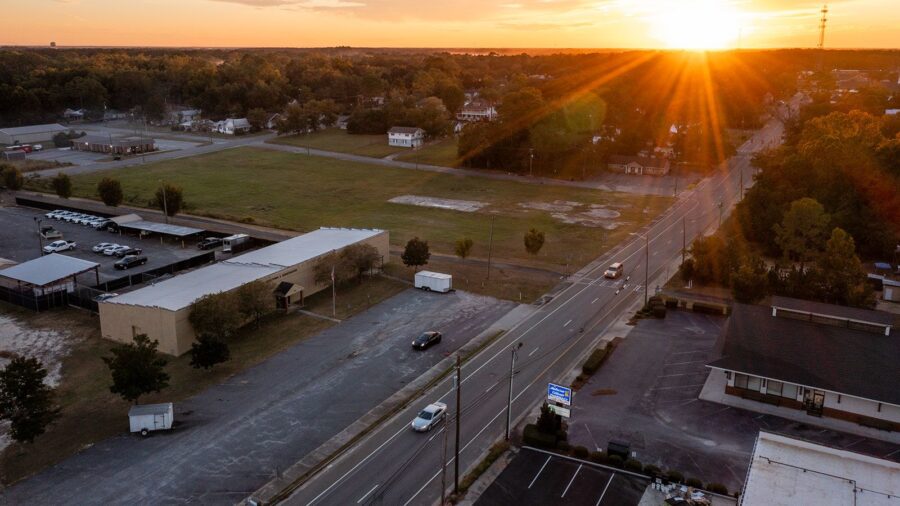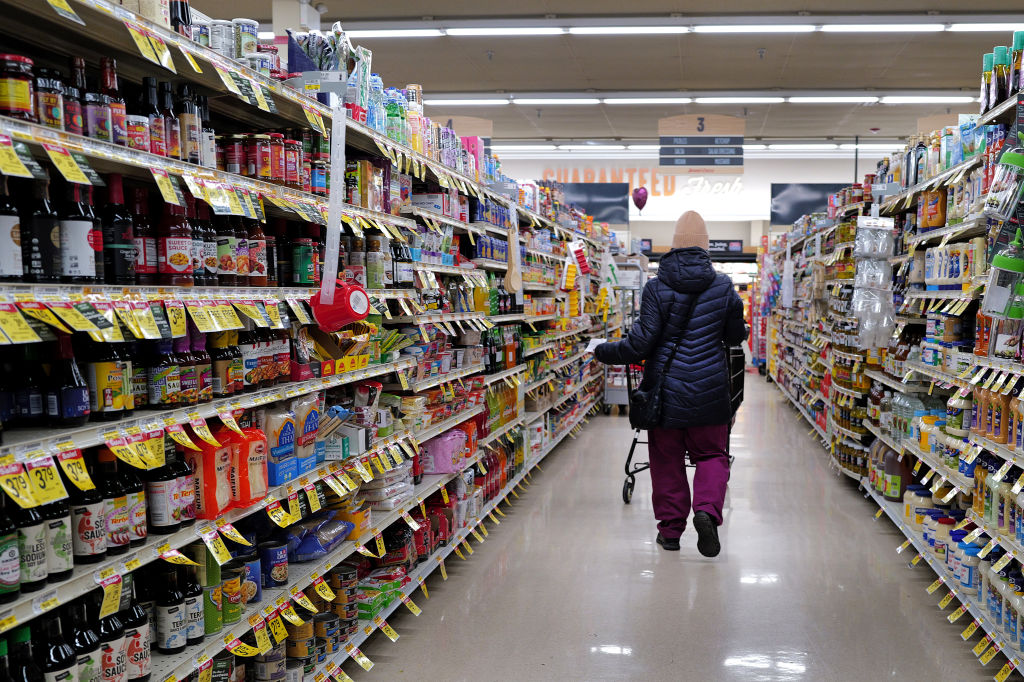Why the Great American Lawn is terrible for the West’s water crisis
Apr 29, 2022, 9:38 AM | Updated: Jun 8, 2022, 3:16 pm
(CNN) — As California plunges even deeper into its multiyear megadrought after an alarmingly dry winter, officials are eyeing what experts say is one of the leading culprits in the crisis: water-guzzling grass lawns.
Residents and businesses in the counties around Los Angeles were told this week that they would need to limit outdoor water use to one day a week starting June 1. It’s the first time water officials have implemented such a strict rule.
“This is a crisis. This is unprecedented,” said Adel Hagekhalil, general manager of the Metropolitan Water District of Southern California. “We have never done anything like this before and because we haven’t seen this situation happen like this before.”
The Great American Lawn has historically been a status symbol and portrayed as a place of leisure and comfort. But they require exorbitant amounts of water to maintain — water that is rapidly running out.
Grass was the single largest irrigated “crop” in America, surpassing corn and wheat, a frequently cited study from NASA and the National Oceanic and Atmospheric Administration found. It noted that by the early 2000s, turf grass — mostly in front lawns — spanned about 63,000 square miles, an area larger than the state of Georgia.
Keeping all that front lawn grass alive requires up to 75% of just one household’s water consumption, according to that study, which is a luxury that California is unable to afford as the climate change-driven drought pushes reservoirs to historic lows.
In Southern California — dotted with wealthy celebrity mansions and pristine green yards — having conventional grass lawns simply won’t work anymore as the consequences of climate change intensify, said John Fleck, director of the Water Resources Program at the University of New Mexico.
“You want to have some space in your backyard for your kids to play, so a little patch of grass is not terrible,” Fleck told CNN. “It’s just the big expanse of lawn — that’s really not being used other than ‘because it looks pretty’ — that has got to go. That’s what we can’t have anymore.
“We just can’t afford the water for it,” he said.
Water hogs
America’s obsession with grass can be traced back to 17th century England, Fleck said, where meticulously manicured lawns became a “symbol of status and wealth” because of the high cost to maintain them.
“That idea of lawns as a demonstration of status really became embedded in gardening culture in this country with British colonialism, so it sort of traveled west with us and took all that labor in,” Fleck said.
In the US, grass lawns expanded and thrived on the East Coast, “where it rains all the time, and you don’t need to add a lot of supplemental irrigation water,” Fleck said. And as Americans marched west, they took with them “the landscape they were familiar and comfortable with.”
“The big problem is we have brought grasses to this climate in the Southwest that come from wetter places,” Fleck said. “The classic example is called Kentucky bluegrass.”
Kentucky bluegrass, which is native to Europe and Asia but grows particularly well in parts of the Eastern US, requires much more water than the West can offer.
The water doesn’t last long in the arid Southwest. The hot, dry air evaporates water quickly, which in turn increases the amount needed to saturate a lawn. This effect grows even larger on hot summer days — warmer air can absorb more — which is also when ample water has been hardest to come by.
In California, the amount of water needed to sustain a grass lawn varies; the state his home to nearly a dozen subclimates that range from wet and cool to hot and dry.
So a 1,500-square-foot lawn in Crescent City on the northern coast might need 22,000 gallons of water a year, according to the California Department of Water Resources.
But farther south, the requirement increases dramatically. The same-size lawn in Los Angeles would need 43,000 gallons a year. An hour east of that in Palm Springs, it jumps to 63,000 gallons a year.
Now consider the fact that the average lawn size in California is more like 5,500 square feet, according to HomeAdvisor, and you can see how lawn maintenance in the West could start to make up a significant portion of a household’s water budget.
Around half of urban residential water consumption in California is used for outdoor landscaping, primarily because of its low humidity and scorching hot summers, according to the Department of Water Resources. An average Californian’s indoor water consumption is around 51 gallons a day — or 19,000 gallons per year — according to the agency.
Lawn mowers, weed whackers, fertilizer
Besides the intensive water use, gas-powered lawn mowers emit pollutants that can cause cancer and planet-warming gases, which in turn contributes to the climate crisis and the region’s drought.
According to the Environmental Protection Agency, gas-powered lawn and gardening equipment released more than 22 million tons of carbon emissions in 2018. Each year, the agency estimates that over 17 million gallons of gasoline are spilled just refueling the equipment.
Grass also has a harder time accessing and absorbing water when it’s fertilized, which means more frequent watering is needed. Fertilizers enhance the growth of the plant, which increases its density both above-ground and below. The roots can become compacted, which ultimately reduces the soil’s ability to hold water.
Scientists have linked the use of fertilizers to an increase in evapotranspiration, the process by which water moves from the ground to the air. In the West, the lack of precipitation and an increase in evaporative demand — also known as the “thirst of the atmosphere” — are the two major drivers of the region’s water crisis. Warmer temperatures increase the amount of water the atmosphere can absorb, which then dries out the landscape.
What you can do different
Fleck, who lives in a lawn-less suburban home in Albuquerque, said if he did have a grass lawn, it would likely require the same amount of water that a “thrifty indoor water user” consumes in one day.
“If you’re going to have outdoor landscaping, the biggest bang for your ‘water buck’ is trees, not lawns,” he said. “With trees, you get a cooling effect in the urban heat island, you save air conditioning energy from the shade, and in an urban area that struggles with air quality like Southern California does, trees help clean the air.”
Some cities are already addressing excessive water use by offering buyouts for homeowners to replace their grass lawns with alternative such as native plants or xeriscaping.
One of San Diego’s key water conservation programs pays homeowners to tear out yards full of Kentucky bluegrass and other turf grasses — $4 per square foot — and replace them with far more water-efficient desert plants. Since launching the program, the city says it has successfully replaced 42 million square feet of turf lawns.
Last year, Nevada passed a bill to ban ornamental grass, mandating the removal of all “nonfunctional turf” from the Las Vegas Valley by 2027. The Colorado River, which provides water for much of Nevada, has been dwindling at an alarming rate. The state’s latest conservation effort would save about 10% of the region’s annual allotment of water from the Colorado River basin.
“Native landscaping makes sense and can be really beautiful,” Fleck said. “One of my favorite Western cities is Tucson, and it has adopted this native landscaping aesthetic and it’s just a gorgeous town, and it just uses a lot less water to do that.”
Fleck said he expects “the brown lawn to be a badge of honor” soon.
“It’s like — I am making my contribution to the well-being of our community in this time of crisis by not watering my lawn,” he said. “And I expect that to become the status symbol.”
The-CNN-Wire
™ & © 2022 Cable News Network, Inc., a WarnerMedia Company. All rights reserved.













